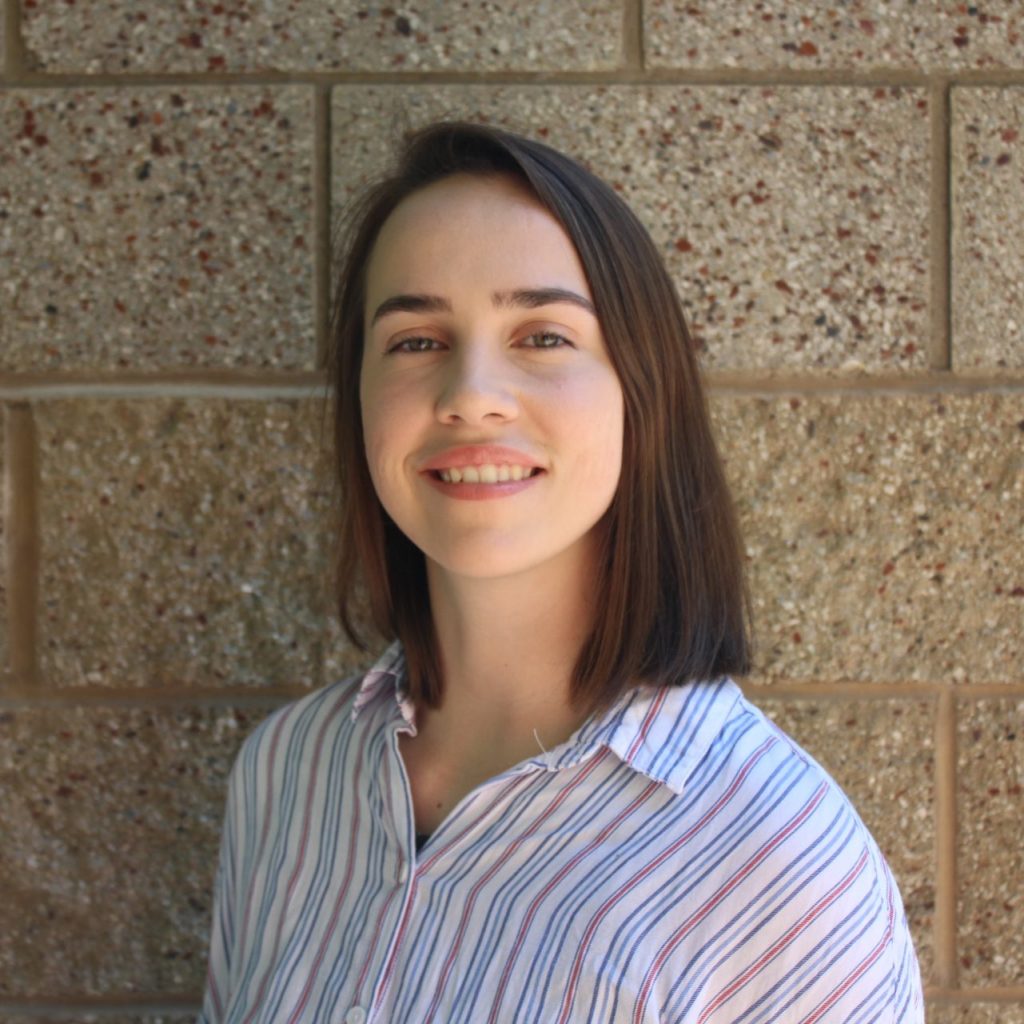
Hello! My name is Courtney Shafer, I’m a 4th-year, first-generation PhD student at the University at Buffalo working with Dr. Kristin Poinar in the Department of Earth Sciences. I’m also a recipient of the 2021 Department of Energy Computational Science Graduate Fellowship.
I am interested in processes that affect the dynamics of our largest ice sheets, the Greenland and Antarctic Ice Sheets, and I use super computers to model how these systems will evolve over time. At UB, I’ve been working on a process-scale model to predict where moulins, large vertical tunnels that connect the surface of an ice sheet to its base, are likely to form. This will help me understand how surface lakes that suddenly drain to the bottom of the Greenland Ice Sheet will impact ice flow in current and future climates. Through my fellowship, I’ve had the opportunity to contribute to E3SM efforts by working with ice sheet and ocean modelers at the Los Alamos National Lab (LANL) to understand how warming ocean waters around Antarctica will impact melting of the underside of floating ice shelves.
Current updates
February 27 2024
A paper that I am an author on was just accepted as a pre-print! Congrats to Jamie O’Neill and co. Go check it out!
“ISMIP6-based Antarctic Projections to 2100: simulations with the BISICLES ice sheet model”
February 20 2024
My proposal application for a second practicum at Los Alamos National Lab was approved and I will be returning this summer!
Last summer, I was able to create an Antarctic-wide subglacial hydrologic maps using a distributed drainage model. This summer, I will use a newly-minted channelized model to simulated drainage across the region. The new subglacial hydrology maps will be validated by their ability to replicate observed subglacial lake locations and by their ability to form consistent subglacial drainage pathways that match observed locations of locally high ice-shelf basal melt rates.
An additional question we would like to tackle is how does subglacial discharge in Antarctica evolve over time and what effect does this have on ice shelf basal melting? Using the channelized drainage model, we will determine present-day as well as future subglacial discharges fluxes which will then be passed to ocean models to determine their impact on simulated ice shelf basal melt rates.
December 2023
I attended AGU and presented an poster titled “Evaluation of modeled subglacial discharge from the Antarctic Ice Sheet to the Southern Ocean”. This is an updated version of the work that I completed over the summer during my CSGF practicum at Los Alamos National Lab!
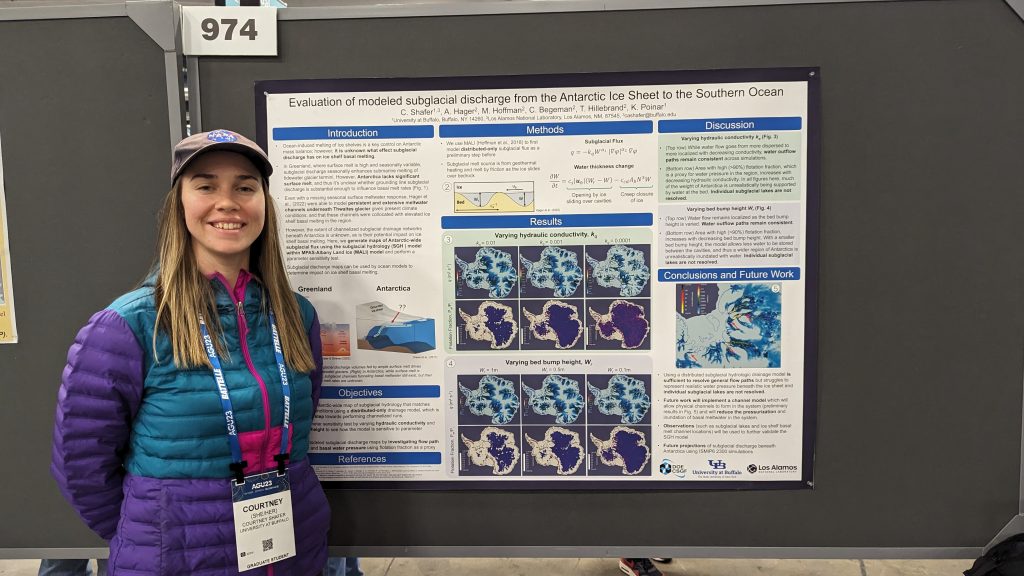
December 2023
I have successfully passed my qualifying exam and am now officially a PhD candidate!
May 2023 – August 2023
I completed my first CSGF summer practicum at Los Alamos National Laboratory working primarily with Matt Hoffman, Alex Hager, Carolyn Begeman, and Trevor Hillebrand.
While at Los Alamos, I learned more about Antarctic subglacial hydrology (which is quite different from Greenland subglacial hydrology since Antarctica does not experience the same seasonal effect that Greenland does due to its minimal surface melt input) and generated Antarctic-wide maps of subglacial discharge using the MPAS-Albany Land Ice model (MALI).
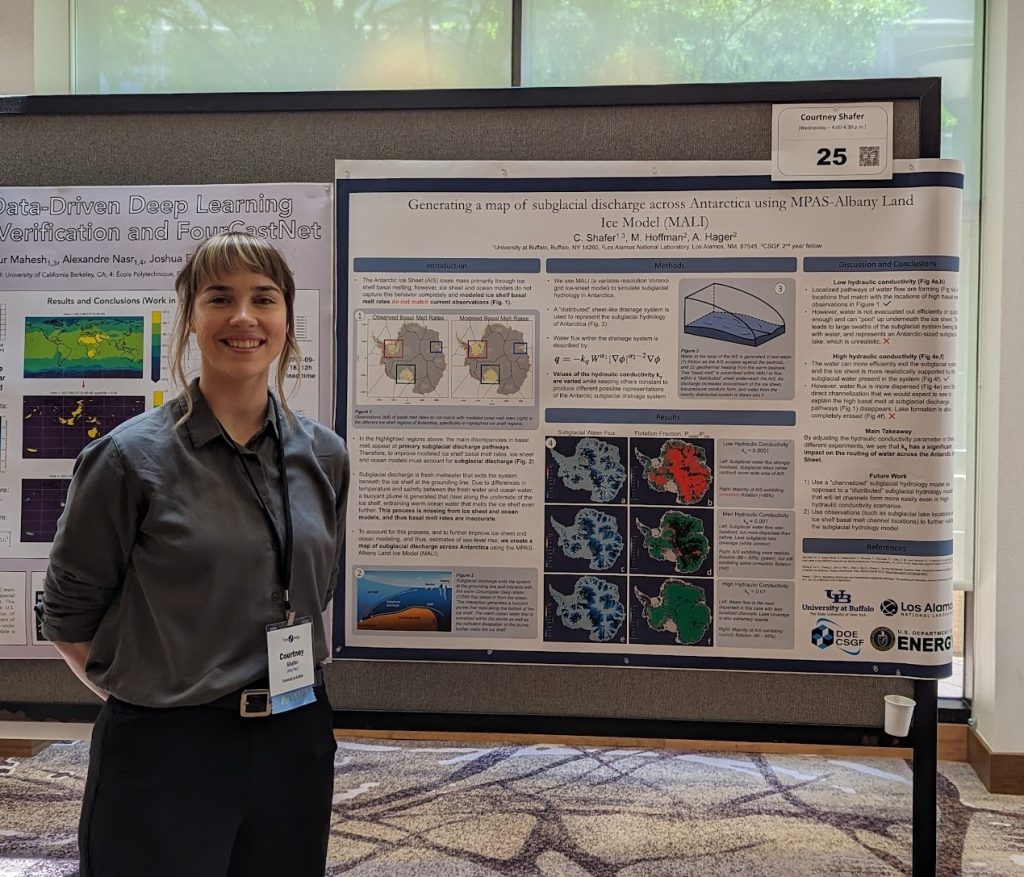
April 2023
Traveled to Maine for the first time to present my poster on my seismoelectric fieldwork at the 2023 Northeast Glaciology Meeting!
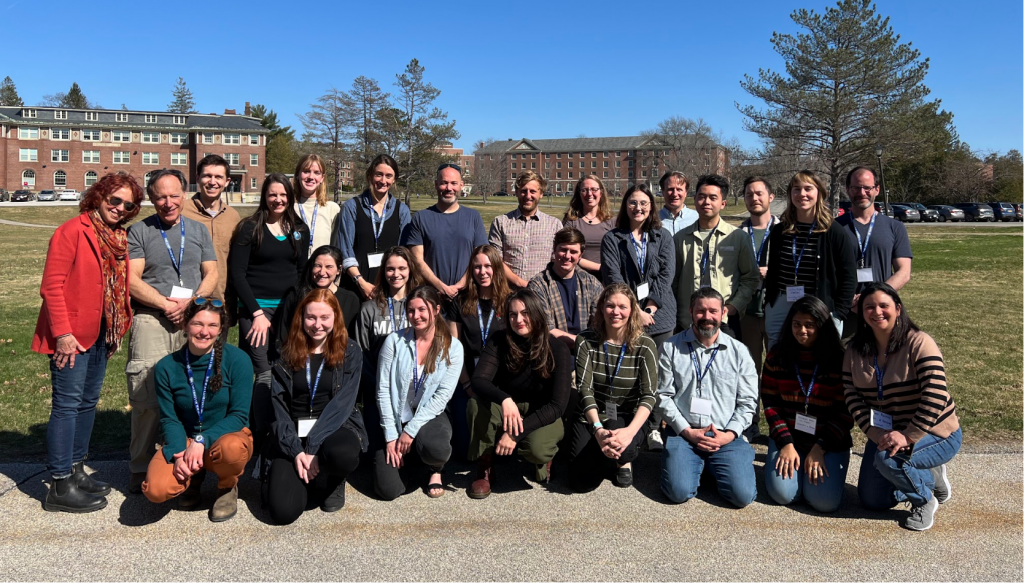
February 2023
I received the SUNY GREAT award!
September 2022
Field work at Helheim!
From September 2nd to September 15th, I participated in fieldwork in southeast Greenland to investigate a perennial firn aquifer at Helheim Glacier, one of the largest flowing outlet glaciers in the southeast region. Specifically, I used “seismoelectric” methods to measure the top and bottom of the firn aquifer in the region to determine the thickness of the aquifer.
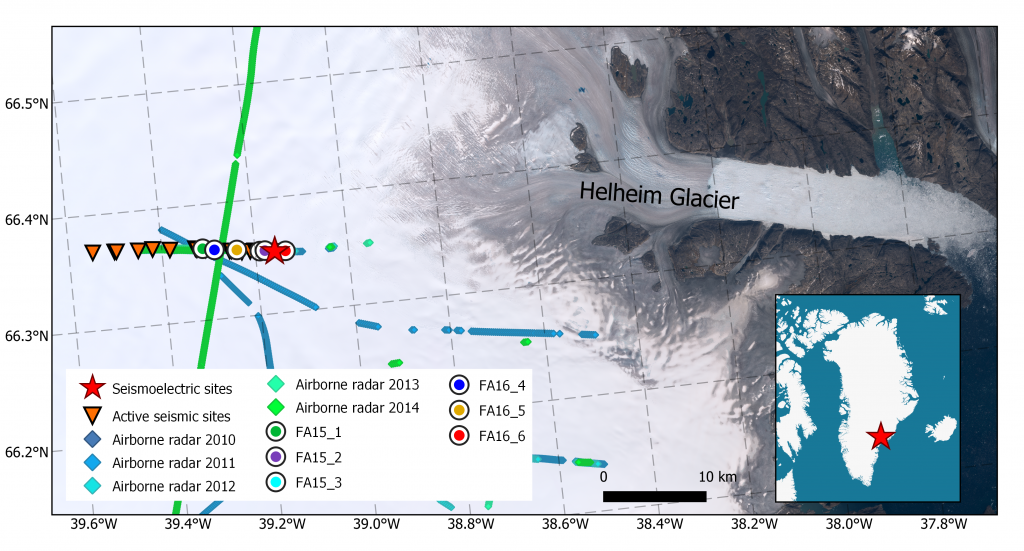
We collected measurements of the aquifer at two different sites (red stars in the figure above). To create the seismic waves, we used two different methods: striking the surface of the snow with a large rubber hammer, or by creating a small explosion at a meter depth within the snow. The strength of the sources used to generate the seismic waves allows you to “see” to certain depth, with the hammer generating a more shallow signal, whereas the explosion creates a more deeper signal.
With the hammer strikes, we were able to “see” the top and the bottom of the firn aquifer and determined a thickness of about 19m (blue shaded region below).

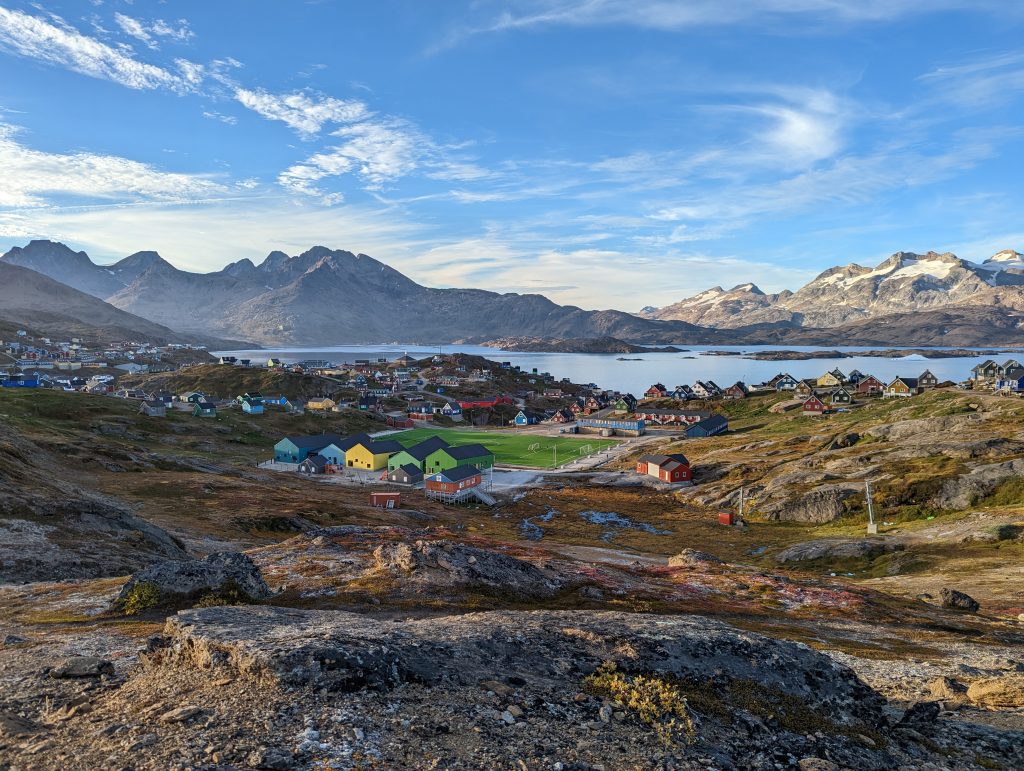
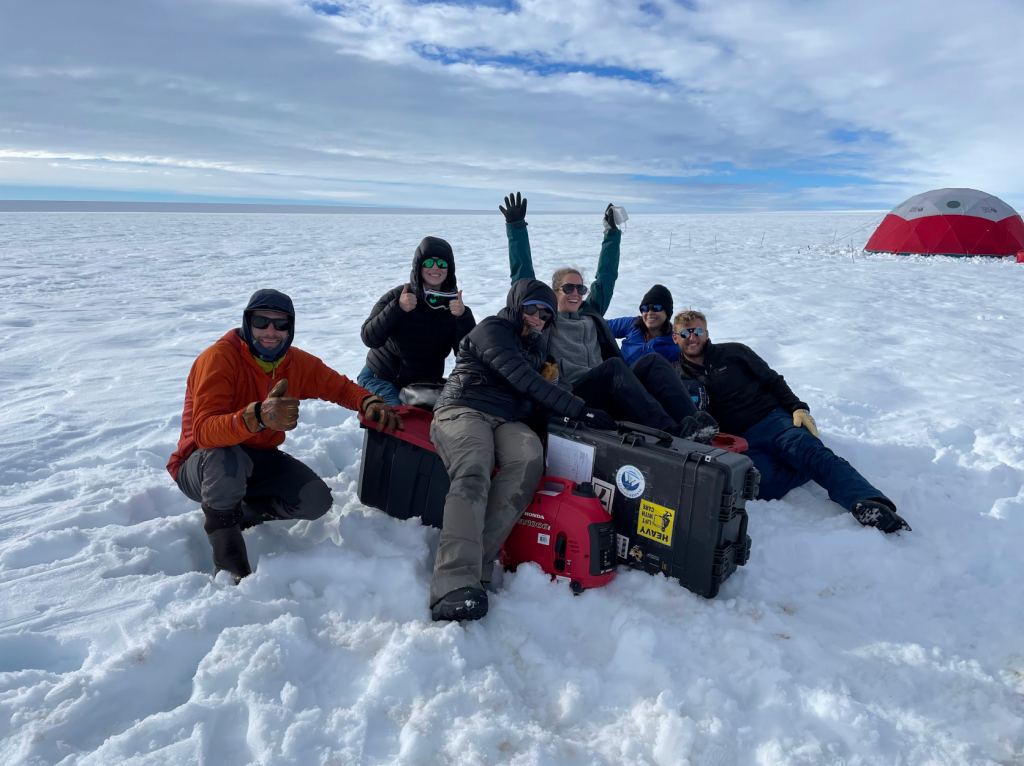
2021
Prior to coming to Buffalo, I worked with Dr. Dan Martin at the Lawrence Berkeley National Laboratory (LBNL) on ice sheet modeling using the BISICLES (https://commons.lbl.gov/display/bisicles/BISICLES) ice sheet model. I was specifically interested in how BISICLES handled different approximations to the Stokes equations (SSA, L1L2, etc.). by comparing generated steady-state grounding line positions for different idealized test cases (MISMIP3D and MISMIP+) with SSA and L1L2. Approximations in ice sheet modeling are a necessary part of modeling since solving a full system model is usually computationally heavy. Ice sheet model comparisons seek to understand these differences between models and are an integral part of confirming the efficacy of these models.
In addition, I contributed to a joint ISMIP6 study and was published alongside 60+ authors!
Edwards, T.L., Nowicki, S., Marzeion, B. et al. Projected land ice contributions to twenty-first-century sea level rise. Nature 593, 74–82 (2021). https://doi.org/10.1038/s41586-021-03302-y

